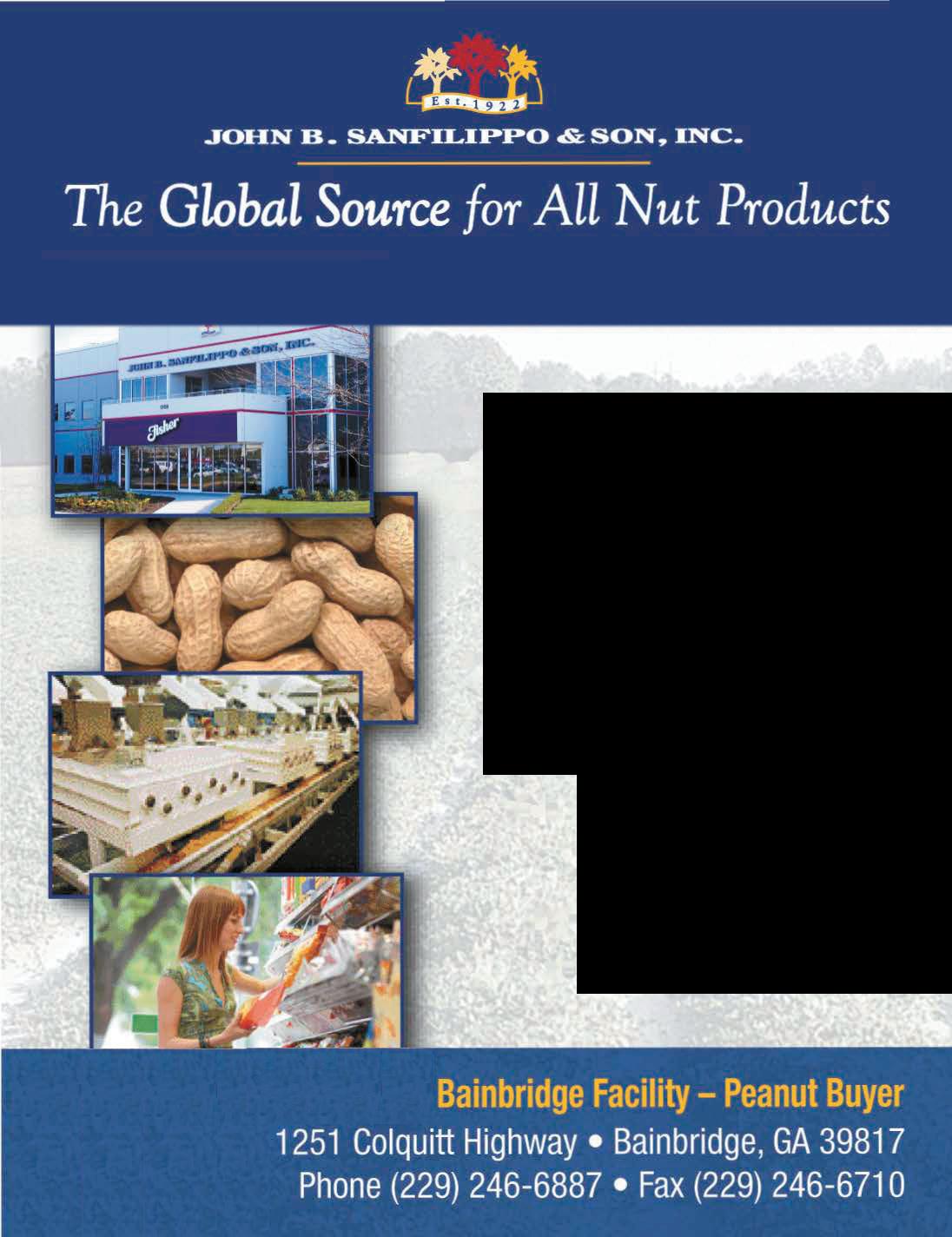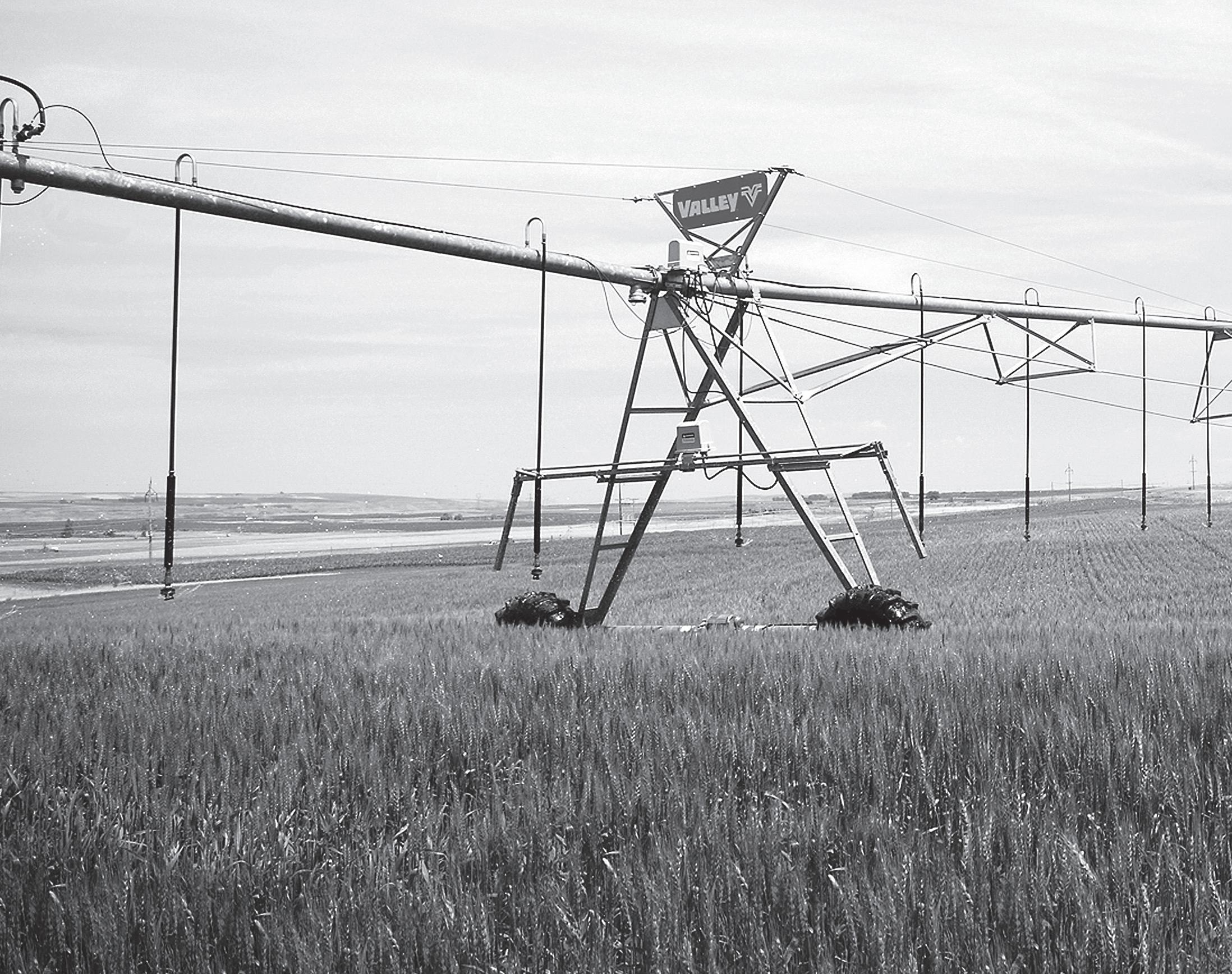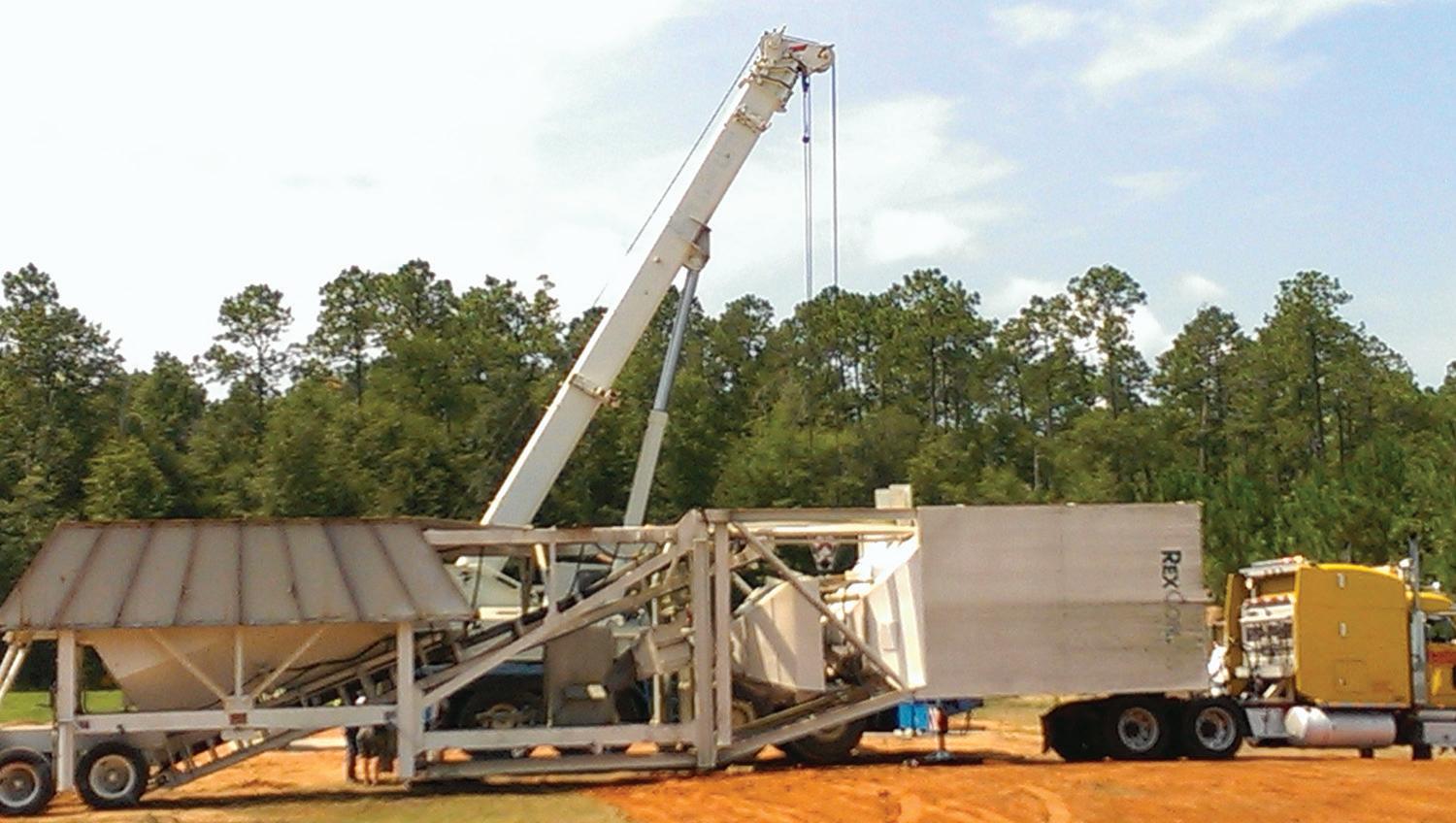





































































Those that have no knowledge of or contact with the world of agriculture may have the perception that the industry hasn’t changed much, envisioning older generations using tractors and machinery sold in the last century. But those working in and around the ag industry know that’s the furthest from reality. Agriculture, like all other industries, has evolved over the decades; multiple different phone apps for managing farm activities and records can be found online, while tractors and other pieces of farm machinery incorporate computers more and more.
Likewise, ever since the advent of the internet, the methods of communicating news and information in the industry are also modernizing. Almanacs, newsletters and traditional news reports are no longer the only methods. Southwest Georgia Farm Credit is
one of the businesses leading the way in this change, with their own monthly ag-centric podcast, “Here We Grow”. Described in a press release as “focused on education and inspiring growth down on the farm, at home, and in rural communities,” the podcast is available on multiple apps, including Apple Podcasts, Spotify and Amazon Music, as well as SWGA Farm Credit’s website.
“We hope to take our listeners beyond the scope of agriculture and into the real life stories and conversations taking place in south Georgia,” Anna Kinchen, Marketing Manager of Southwest Georgia Farm Credit said in the press release.
Hosted by Billy Billings, SWGA Farm Credit Relationship Manager, and recorded at Sowega Live’s studio, the program has featured an array of guests since its launch last year. These guests have ranged


“Our goal for it was, of course, to tell southwest Georgia’s story, put southwest Georgia on the map.”
-Anna Kinchen
from local farmers, to public officials such as Georgia Ag Commissioner Tyler Harper, State Senator Sam Watson, along with contributions from various employees and officers of Farm Credit. Topics discussed have ranged from farm financing to wildlife management.

“Our goal for it was, of course, to tell southwest Georgia’s story, put southwest Georgia on the map,” Kinchen said. “Anywhere else, you talk about the Coastal Plains of Georgia, you think of Savannah. A lot of times when you mention

Georgia to someone they immediately think of Atlanta. Again, we’re trying to build a presence for Southwest Georgia, especially on the ag scene.”
However, the program is not just meant to advertise southwest Georgia; it’s meant to be an educational resource for new and establishing farmers. “Another reason why we’re really trying to promote it and get it out there is because it’s providing education and free resources in an easyto-digest format,” Kinchen said. She continued, explaining, “We do the Wiregrass Land & Living
magazine, and of course we promote stuff out there on our social media pages, but it only gets so far. We’re focused on reaching that young, beginning and small operational producer, so how do we get them? What channels are they using to get their information from? It’s really not the news anymore.”
Podcasts as a whole are rapidly growing in popularity as a media format. According to statistics, Spotify reported a podcast audience of 32.5 million for 2022 in the United States alone, while Apple Podcast reported an
audience of 28.5 million that same year. Those same statistics predict continued growth in listeners, with Spotify estimated to have 36.3 million this year, and Apple 28.8 million. According to statistics website DemandSage, the global audience for podcasts was over 420 million in 2022, and as of July of this year, that has grown to over 460 million. Now, farmers can hear the latest news anywhere, be it on the road, in the barn, or in the field; hardly an industry stagnant or in the past.












Farming is a significant part of the Decatur County economy. In 2021, farming in the county generated $312 million in revenue. Four crops made up half of the total county revenue: sweet corn, tomatoes, peanuts, and cotton.

Sweet corn is the county’s most valuable crop. In 2021, it generated $90.8 million in revenue, almost three times as the second-most valuable crop.
There were 12,000 acres of sweet corn planted in Decatur County that year, making each acre worth $7,500.
Decatur County has very favorable growing conditions for sweet corn. Brian Hayes, a UGA County Extension coordinator, said Decatur
County has a soil composition that drains water well.
“We have sandy land, and we can work the ground very quickly after a rain,” Hayes said. “In heavier dirt, you’re out of that field for weeks. In our sand, you can get back in it almost immediately.”
Sweet corn is less labor-intensive than other crops, according to Hayes. Sweet corn is planted in tilled land and irrigated by pivot irrigation. It does not use drip irrigation, nor are the crops grown in plastic, and Hayes said those two things make it easier on laborers.
Sweet corn is the corn farmed primarily for eating. It is bought and eaten most in the summer, especially on holidays such as Memorial Day, Fourth of July and Labor Day.
Farmers take consumer behavior into account when planting a field of sweet corn. Most Georgia farmers grow sweet corn for the Fourth of July
“window.” It’s referred to as a window because sweet corn yields from other states primarily handle the other summer holidays.
Because of differences in growing conditions, Florida farms can start growing sweet corn before Decatur County farms. The earlier start date means that farms in the Sunshine State aim to have their yield for Memorial Day.
Because Florida has Memorial Day covered, Decatur County farmers have the fourth of July to capitalize on.
The market is volatile, according to Hayes, and if Florida is late or has a leftover supply of sweet corn from Memorial Day, they will have corn to sell during the Fourth of July window. This increases supply and lowers the price for which Decatur County farmers can sell corn.
Georgia is the third largest fresh market sweet corn producer in the United States, according to the UGA Extension.
There are two growing seasons for sweet corn in Georgia:spring and fall. Spring yields tend to be higher than fall yields.
Different varieties and planting densities may be selected for spring and fall to produce optimal yields and ear size and to reduce defects.
Maturity level is very important for sweet corn harvest. Sweet corn has to be harvested in a 3-day maturity window to produce the best product.

For sweet corn to meet the desirable “U.S. Fancy grade,” ears must be greater than six inches long with a blank tip less than one-quarter of the ear length.
Tomatoes are the second most valuable crop in the county, with an FGV of $35.7 million. 2021 saw
1239 acres of tomatoes planted, making each acre worth $28,798.
Justin Long, owner and operator of Long Farms, said the tomato acreage in Decatur County is represented mainly by farm companies, as opposed to local, privately owned farms. Gargiulo Produce and Pacific Tomato Growers are the biggest tomato producers in the county, and both are farming companies.
There are multiple types of tomatoes grown in Decatur County. Long grows Roma tomatoes and three varieties of round tomatoes. He said that consumers use the different types of tomatoes for other things.
“[Roma tomatoes] are meatier,” Long said. “They’re what people use for their tomato sauces. I plant a few of them, maybe an acre or so.”
Like sweet corn, Tomatoes grow well in Decatur County because of the high rate of drainage offered by the soil. Sandy soil gets rid of water quickly, which benefits tomatoes because too much water can harm the crop.
“You don’t want to water them too much, or they start cracking,” Long said. “It’s called weather checking. The tomatoes start getting splits in the top.”
Peanuts come in third, making nearly as much as tomatoes with $34.9 million in revenue.
Peanuts were the most planted Crop in Decatur County in 2021, with 34,787 acres planted.
Each acre of peanuts planted in 2021 was worth $1,002.
Glenn Heard, owner and operator of Glenn eard Farms, said the growing conditions for peanuts in Decatur County are as good as they come.
“If you compare our area to any other area in the country, and other countries as well, we can grow peanuts competitively with anyone,” Heard said. “Our water and our sandy land and the climate that we have, that’s really truly that’s what makes it go.”
Heard said peanuts have been a presence in the county for a while. When he planted his first crop 44 years ago, part of that was peanuts.
There are 4 distinct market type peanuts grown commercially today, according to the “Peanut Production Guide” published by the UGA Extension. Those types are the Runner, Spanish, Virginia and Valencia peanut.
The “Peanut Production Guide” stated that Georgia accounts for 40 to 55 percent of the peanut production in the United States, and that peanut yield per acre in Georgia has consistently been among the highest in the United States.

Historically, the heaviest concentration of peanut
production is in southwest Georgia, according the the production guide.
Cotton is the fourth most profitable crop in Decatur County. In 2021, the crop generated $22.8 million in revenue.
There are 30,220 acres of cotton planted in Decatur county. That makes it the second most bountiful crop behind peanuts. Each acre of peanuts planted in 2021 was worth $756.
Since 1980, the number of acres of planted cotton in Georgia has grown by more than 600% and the pounds of cotton yielded per acre has grown by 65%.









I v e y
W e w a n t t o t h a n k a l l t h e A g m e n a n d w o m e n o f B a i n b r i d g e . B



















The Future Farmers of America offers a variety of activities and opportunities to students looking to go into the field of agriculture. They can participate in career or leadership development events in subjects ranging from floral arrangements to livestock evaluation, while those interested in the internal politics can act as representatives at the Annual National FFA Convention. For those that want to work with animals, one option is participating in the livestock show team, exhibiting their choice of cattle or pigs in the arena.
This year’s BHS FFA show team has been rather busy over the last month, with some members having already gone through three shows, though they currently have a brief break until their next show, at the Perry State Fair. The team consists of Preston and Carson Lynn, Abby

Grubbs, and Addison and Ansley Cook, with Preston specializing in showing pigs, Grubbs and the Cooks show cattle, and Carson showing both.
Unlike other sports, where a team must compete in each event and qualify to move up to regionals, state, nationals, etc., qualifiers are not necessary for showing. “In the show world, you don’t necessarily have to qualify for those things, everyone gets the opportunity to go to them,” Carson explained, “and you can choose whether you just go to the state show, or just go to the local shows, or just go to the national shows.”
Another aspect of the show world is the limits placed on competitor animals; for cows, age limits are placed to prevent previous winners from dominating year after year. “A lot of cattle ones do it so if this cow’s won a
year, and comes back and wins next year, they want to put a deadline on the birthday, because they don’t want you to be able to show that same animal every single year,” Grubbs said. While pigs have no limits on birthdate, they do have weight limits in place.

Each of the students have their own reasons for gettingintothelivestockarena,whethertheirfamilywas already involved in the livestock business, like the Lynns, or not, like Grubbs, whose neighbor ultimately got her into it. Regardless of the individual circumstances that lead themthere,thereisonething all five agreed upon about showing livestock: it’s a sport of passion.
“I love it, it’s a passion of mine,” Preston said. Carson echoed this sentiment, saying, “It’s one of my passions. I love being able to get out of school, and sometimes it’s a pain to have to get out there and work with them in
the heat of the day, but for the most part it’s something that I love, and something that I wouldn’t trade for the world.”
Grubbs agreed , similarly describing it as a passion, “being able to bond with an animal, and being able to do something that you love every day. It can be hard at times, but overall it’s a lot of fun.”
It truly can be a challenge at times, between early mornings getting animals loaded, as well as the special precautions that need to be taken for cattle. “We normally keep it close,” Addison said, “because cows are kind of harder to move around, especially if you don’t have the right equipment to move them around.” Coolers and air conditioning are a necessity for showing cattle in the south Georgia summer heat to prevent heatstroke.
“You put in so much effort to the time at home working with them, you have to really enjoy it,” Addison said, “and I do, I grew up with cows… A lot of people do it to
“I know every cow I’ve had, I’ve loved so, so much. They’ve just been like my best friend.”
-Ansley Cook
win, we do it for fun.”
“I just like the relationships we form,” Ansley said. “I know every cow I’ve had, I’ve loved so, so much. They’ve just been like my best friend.”
The Cooks keep their cattle at the county barns, leaving early every morning for breakfast feeding, before heading back after school, and once more later in the evening.
“I would say if you have a passion about livestock, to get into showing,” Addison said. “You build so many connections, your leadership skills, your ability to work with somebody, work with other members or teammates that you’re competing with, it helps a lot.”

“I think this is something that everyone should have the opportunity to do, because you learn a lot of valuable lessons,” Carson said. “It can be hard at times, it takes a lot of hard work and dedication, but in the long run it
teaches you so many things, and gives you so much to learn from.”
FFA advisor and BHS Agricultural Education teacher Victoria Harrell had a positive outlook for this year’s show season, with the team having grown from three to five this year. “Since they’ve gotten into high school and a lot of them are upperclassmen, they’re working extra hard on their projects, because the competitive nature of this team is bar none,” she said. “They are super competitive, no matter what show they go to, they’ve done the homework and practiced at home to be competitive in all these shows.”
Harrell acknowledged the passion and dedication the students put into the team: “They are the hardestworking individuals I have ever met, and I’m super proud of that. What I look forward to is just watching their growth throughout the year.”















Georgia is the leading peanut grower in the United States. In 2020, the Peach State supplied more than half of the nation’s peanuts.
Peanuts were the most planted crop in Decatur County in 2021, with 34,787 acres planted. That year, peanuts generated $34,860,363 in revenue, accounting for 11% of all farming revenue generated in the county. Those numbers made Decatur County the second most prominent county for peanuts in the year.

Glenn Heard, owner and president of Glenn Heard Farms, started farming 44 years ago. He had peanuts in his first crop and has peanuts now.
“If you compare our area to any other area in the
country, and other countries as well, we can grow peanuts competitively with anyone,” Heard said. “Our water and our sandy land and the climate that we have, that’s really truly what makes it go.”
Heard is a third-generation farmer who bought his company from his father in 1980. Before starting the Glenn Heard Farms of today, Heard had his own plot of land and farmed alongside his father.
Today, the cycle continues and Heard farms alongside his son, who has his own plot of land.
Peanut season is in full swing. According to Heard, the season runs through September and October, and he and his son have planted 6,000 acres of the crop.

There are four distinct market-type peanuts grown commercially today, according to the “Peanut Production Guide” published by the UGA Extension. Those types are the Runner, Spanish, Virginia, and Valencia peanuts.
Peanuts grow in the ground. The crop thrives in Decatur County’s sandy soil for four to five months before being harvested.
“A lot of people think they grow on the root,” Heard said.
Heard likened the peanut growing location to leaves on a tree. As leaves grow on branches of a tree, not the trunk, peanuts grow on the “limbs” of the plant in the ground but not on the root.
Once the peanuts are harvested, they go through a drying process.
Trucks and trailers full of peanuts get hooked to peanut dryers. A peanut dryer is, essentially, a suped-up hair dryer. A hose blowing heated air connects to the bottom of a ventilated truck and


dries the peanuts from the bottom up.
After drying, there is a weighing process, a cleaning process, and then grading.

Christi Fletcher is a lead inspector at Glenn Heard Farms and has been doing it for more than 12 years. Peanut grading is the process of assessing a harvest of peanuts for quality. Peanut graders put the peanuts through a de-shelling machine, then put the shelled peanuts through a sorting machine, arranging the peanuts by size.
After that, a peanut grader inspects a sample of the de-shelled, pre-sized peanuts for physical damage or any impurities in the sample.
After sorting, the nuts eventually go on to market, some going to confectionary companies to be put into candies or made into peanut butter, while others are sold whole. With so many purposes and so many buyers on the market, the peanut’s status as one of Georgia’s king crops shouldn’t be surprising.
It would be an understatement to say there has been much political turmoil under the Gold Dome in recent years. However, while election drama and political squabbling grab all the headlines and capture the eyes of the nation, state representatives continue to work on legislation; legislation that, while it may be less scandalous than other issues, is still critical to Georgia residents. As Georgia’s primary industry, legislation concerning agriculture is perhaps the most critical. On August 31, following the passing of Hurricane Idalia, state representatives met with local farmers and ag business leaders at the Cloud Livestock Facility to discuss some of the more recent ag bills passed in the last legislative session, as well as potential issues facing the state. This included Representative Joe Campbell, State Senator Sam Watson, and the state Ag Commissioner, Tyler Harper.
Campbell spoke first, listing several of the bills that passed, later summarizing each for The PostSearchlight. There were three of particular note: Senate Bill (S.B.) 220, the Georgia Farmland Conservation Act; House Bill (H.B.) 545, which establishes an Agricultural Commodity Commission for citrus fruits; and H.B. 189, a bill dealing with truck weight variances. The Georgia Farmland Conservation Act created a farmland conservation trust fund, which will award
By Ethan Reddish - The Post-Searchlightgrants aimed at supporting active farming operations and food production. As Representative Campbell put it, “There’s a big concern over losing farmland in the country.” The bill itself lists the reason for this, saying, “Ensuring permanent conservation of farmland is of vital importance to the state and the citizens of Georgia and essential in protecting Georgia’s agricultural economy, the ecological benefits provided by agricultural lands and activities, the community character enhanced by agricultural landscapes, and food production in the state”. The bill emphasizes the importance of transferring farms “under development pressure to next-generation farmers”, as well as of increasing the locally-grown food supply.

The House Bill establishing an Agricultural Commodity Commission is relatively brief, mainly defining a citrus “producer” as “a producer that owns or operates at least five acres of citrus fruit bearing trees.” The bill further elaborates that every three years, in accordance with existing legislation, a vote will be held to determine if the commission should continue to exist/operate.
As for the bill on changing truck weight variances, the previous weight variance for trucks hauling crops or agrelated products was 5%, or 5,000 pounds, according to Campbell. Truckers that violate these restrictions are fined per pound of excess weight, as they are
“conclusively presumed to have damaged the public roads, including bridges, of this state by reason of such overloading”. With this most recent bill, the variance has been raised to 10%; this is in line with the rates of surrounding states. When asked why the Georgia rate had remained at 5% for so long, Campbell told the PostSearchlight, “I don’t think it’s ever been challenged. I think what brought us to the table, is that every state around had it.” Senator Sam Watson took to the podium after Campbell. One of the issues he broached was that of land ownership penalties inflicted on farmers. “Right now, if you own more than 2,000 acres, you’re penalized. You’ve got to put it in your wife’s name, or someone else’s name,” he said. “The family farm is bigger now, and we need to look at that 2,000 acre number, and not penalize the farmer if he owns a lot of land.” This is an issue Watson stated he intends to address in next year’s legislative session. Water usage was another topic Watson brought up, including water access and well compliance. However, what he took more issue with was Senate Bill 115, which deals with navigable water and the rights of landowners with property adjoined to those waters. This bill, in Watson’s words, passed “at midnight”, and ruled that, “The General Assembly finds that the state procured ownership of all navigable stream beds within its jurisdiction upon statehood and, as sovereign, is trustee of its peoples’ rights to use and enjoy all navigable streams capable of use for fishing, hunting, passage, navigation, commerce, and transportation”.
Watson was concerned for the potential issues this could raise for farmers that use river water: “There’s a lot of questions there, this bill was not vetted properly… What happens if the river drops too low, and you’re pumping out the river? Can you keep pumping out of the river, or can you get in trouble? Because it’s not your water anymore, it’s the public’s water.”
Though Commissioner Harper didn’t speak on any new pieces of legislation, he still spoke on important issues facing Georgia agriculture. These issues included criminals, especially the cartel, using the agricultural market as a front for smuggling. “Just like water flows

the easiest way possible, so does criminal activity,” Harper said. “And unfortunately, agriculture has become one of those areas where criminal activity has found that it’s easy to utilize agriculture to perpetrate what they do every single day.” This smuggling passes through Atlanta’s farmers markets, in addition to other more mundane criminal activity that takes place around them. Harper focused on his efforts to clean up crime in this regard.
As for natural threats to Georgia agriculture, Harper had spent much of that day visiting parts of east Georgia impacted by Hurricane Idalia. Pecan orchards were ruined, as was any corn or tobacco crop that hadn’t been harvested yet; this doesn’t even include damage to barns, equipment and farm owner’s property. Also, while nowhere near Decatur County, a foreign threat to agriculture was reported in the Savannah area: yellow-legged hornets, also called Asian hornets. In a similar manner to hawks preying on smaller birds, these hornets actively hunt and prey on honey bees, and can decimate nests. Harper reported that the nest, which according to him was the size of the lectern, was successfully removed. That said, farmers should keep a keen eye for this invasive species in the future.
If criminal activity is akin to an outlet of water, seeking the path of least resistance, then the current state of agriculture in Georgia would best be compared to a lake fed by waterfalls: that is, large, large and stable enough to support countless lives, and yet tumultuous, with many contributors constantly in flux.






































